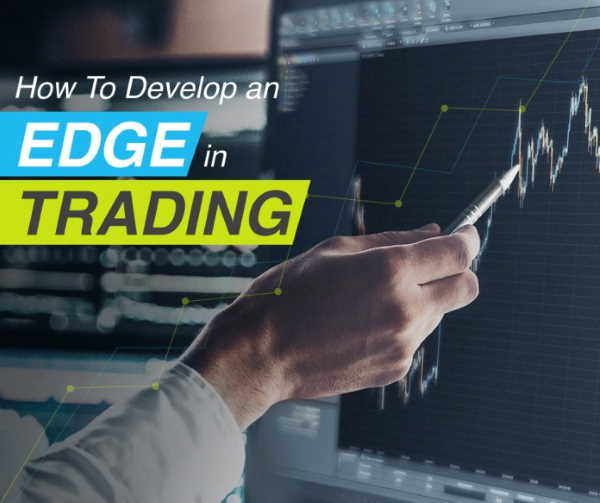A trader’s edge is everything. If you have an edge you have a seat at the table. It’s like poker. Poker players that have an edge always have a stack of chips. Sure they might go through losing streaks which decrease the size of their stack. But the point remains: they still have chips.
This essay will teach you three things:
1. What is a Trading Edge?
2. How To Create Your Trading Edge?
3. Best Tips To Develop Your Edge
A Trading Edge: What It Is & How To Improve It
Michael Mauboussin defines a trader’s edge in four different ways:
1. Behavioral
2. Analytical
3. Informational
4. Technical
Behavioral
Behavioral edges come from a trader exercising superior emotional control over the market collective. These edges are extremely robust since from the dawn of markets, the herd’s emotional response to price movements has largely remained the same.
How can a macro trader effectively take advantage of behavioral inefficiencies?
This requires a careful examination of market sentiment.
This is because once the crowd has fully committed to one side — there is only one way to go, the opposite way.
Once the market collective all agrees on a single outcome price has nowhere left to trend. “Greater fools” have all run out and there is literally no one else available to buy (or sell). To correct this market inefficiency, the price will snap back in the opposite direction. The graph below shows just how well expectations of the crowd line up with future returns. The higher the expectations the lower the future returns of equities.
Analytical
Analytical edges are created by processing publicly available information more effectively than other market participants.
Weighting information differently, updating your views more effectively or anticipating a change in the market’s narrative quicker than the majority are all examples of how one can create an analytical edge.
People incorrectly weight information due to confirmation bias and recency bias. It’s natural for traders to look for confirming evidence to back up a trade of their interest. Do the opposite to gain an analytical edge. Read the other side’s argument to red team your own trade idea.
Also, it’s easy to fall down the trap of looking at the most recent information and assuming it holds more weight going forward than other conflicting information. Just because an asset has been going up recently doesn’t mean that trend will continue. Analytical edges are created by looking at the entire picture without overweighting information from a particular time window.
Maintaining an analytical edge doesn’t end at trade entry. New information is constantly flowing in, and incorporating that into a trading view is important. Updating beliefs based on new information is called Bayesian analysis. When new data is released, price action evolves sentiment changes and the narrative morphs. Take these things into account.
It’s good practice to have predetermined time intervals where you check-in to see if your trade thesis has strengthened or weakened. If things have changed it’s possible to increase your analytical edge by tweaking position size.
Informational
Informational edge is one of the more obvious edges. If you knew what Apple earnings were before the market it wouldn’t be that hard to place bets the day of the earnings announcement and instantly pocket a nice chunk of change.
But technology and regulation, in particular, have mainly zeroed out this edge.
Jesse Livermore made a killing by reading the tape because price action data wasn’t widely available and not many people knew how to get it. These days everyone has that data and knows how to read a chart. Fundamental information has undergone a similar transformation. Everyone is a simple google search away from finding the key metrics to gauge a company’s health.
Information edge is a STRONG edge but it does not last and you need a large technical infrastructure in place to capitalize on it. Any individual or small trader is best served working on the other acronyms in BAIT. Leave the informational edges to the quant firms packed with Ph.D. data scientists.
Technical
Technical inefficiencies describe instances where other market participants are forced to transact in direct contradiction to their own forecast. For example, a trader sells a crashing stock even though he believes it will end up higher than the market price in 3 months’ time.
Common reasons for these forced transactions include laws, margin calls, fund redemptions, fund inflows, and other regulations. Technical edges often coincide with extreme market stress and they don’t last long.
Concluding Thoughts
Developing and honing your trading edge is the most important aspect of market speculation. If you don’t have an edge you don’t have a seat at the table. Edges come in a variety of flavors but center around four aspects:
• Behavioral
• Analytical
• Informational
• Technical
Work on each aspect of your edge and over time you’ll build a robust and profitable trading system. One that may not work all the time, but will ensure that you almost always have chips at the poker table.












